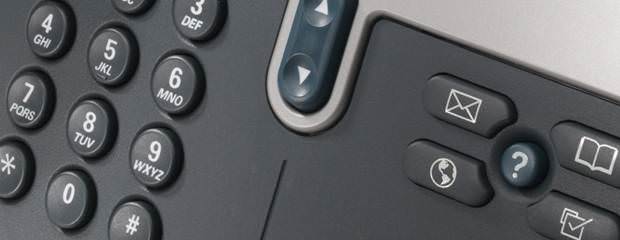
VoIP makes a good platform for controlling botnets
Botnets and their masters can communicate with each other by calling into the same VoIP (Voice over Internet Protocol) conference call and swapping data using touch tones, researchers demonstrated at Defcon.
LAS VEGAS -- Botnets and their masters can communicate with each other by calling into the same VoIP conference call and swapping data using touch tones, researchers demonstrated at Defcon.
This gives the botmasters -- whose top goals include remaining anonymous -- the ability to issue orders from random payphones and disposable wireless handsets, say researchers Itzik Kotler and Iftach Ian Amit of security and risk-assessment firm Security Art.
Using phones and the public phone networks eliminates one of the prime tools bot fighters have: taking down the domains of botnets' command and control servers, the researchers say. If the botmaster isn't using a command and control server, it can't be taken down.
In fact, the botmaster can communicate with the zombie machines that make up the botnet without using the Internet at all if the zombies are within a corporate network. So even if a victim company's VoIP network is segregated from the data network, there is however a connection to the outside world.
In addition to its stealth, the VoIP tactic employs research that gladly pierces corporate firewalls and uses only traffic in other words difficult for data loss prevention software to peer into. The traffic is streamed audio, so data loss prevention scanners can't recognize patterns of data they are supposed to filter, the researchers say.
The downsides of VoIP as a command channel are that it severely limits the number of zombie machines that can be contacted next, and the rate at which stolen data can be sent out of a corporate network is limited by the phone system. Nevertheless Kotler and Amit say the connections are plenty big to send commands in.
The conference
During their demo at the conference, the pair had an Asterisk open source IP PBX (Private -Automatic- Branch Exchange) stand in as the corporate PBX (Private -Automatic- Branch Exchange). A virtual machine representing a zombie computer on a corporate network called via TCP/IP through the PBX (Private -Automatic- Branch Exchange) and into a corporate conference call. A BlackBerry, representing the botmaster dialed in over the public phone network to the same conference call.
The researchers at the time used Moshi Moshi open source software to communicate between the botmaster phone and the zombie machine. Moshi Moshi includes a translator that converts commands into DTMF touch tones as input, and converts stolen data from text to speech for output. The resulting voice traffic is phoned into a voice mailbox that the botmaster can pick up whenever it's convenient.
One tricky part is configuring the PBX to allow DTMF tones to pass through into the conference. Another is that the botmaster has to create a DTMF-based language that the bots are programmed to understand.
The researchers say their demonstration
The researchers say their demonstration was merely a proof of concept, and that it could work much better with refinements. To illustrate, incorporating modem research into the scheme could result in faster exfiltration rates than sending speech-generation voicemails.
To defend against this type of VoIP abuse, Kotler and Amit recommend separating VoIP from the corporate network altogether in order to prevent compromised computers from tapping into conference calls. They recommend monitoring VoIP activity to discover unauthorized use of conference calls, say, afterwards business hours. And they say conference calls should be white-listed -- allowing access only from authorized IP addresses and phone numbers.
- · Rackspace debuts OpenStack cloud servers
- · America's broadband adoption challenges
- · EPAM Systems Leverages the Cloud to Enhance Its Global Delivery Model With Nimbula Director
- · Telcom & Data intros emergency VOIP phones
- · Lorton Data Announces Partnership with Krengeltech Through A-Qua⢠Integration into DocuMailer
